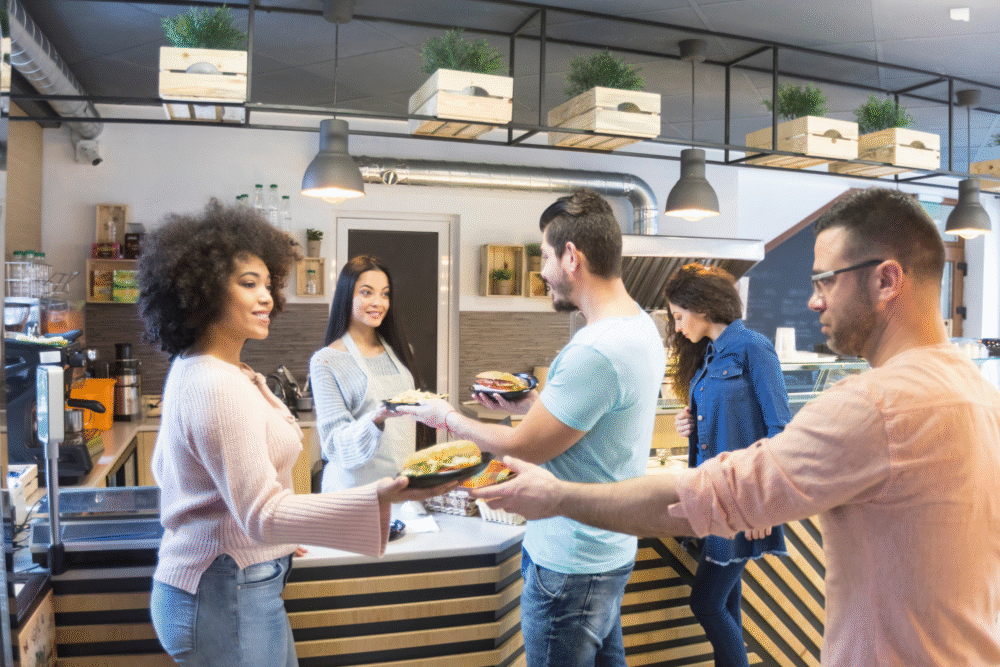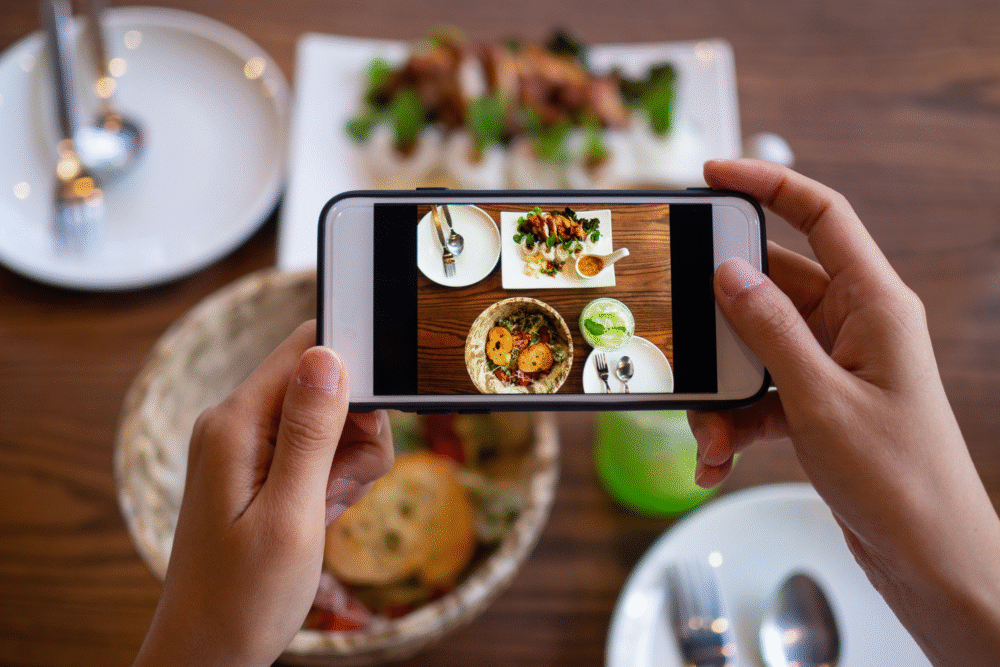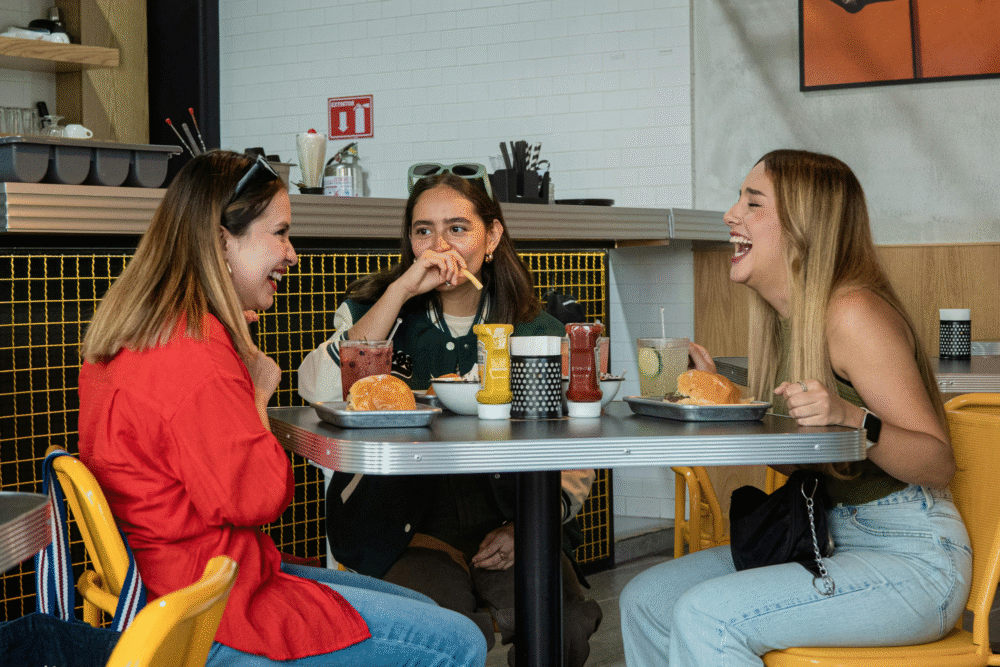Younger generations are eating differently, and it’s putting restaurants out of business.

The restaurant industry has long operated on predictable models, but a new wave of diners has arrived with different priorities. Gen Z and millennials are not just looking for a meal; they’re seeking value, authenticity, and experiences that align with their social values. This shift is forcing a major re-evaluation of how restaurants do business.
This generation’s dining choices are influenced by a blend of financial practicality and a desire for more meaningful connections. From prioritizing delivery apps to demanding transparency about sustainability, their habits are reshaping the culinary landscape in ways that are both challenging and innovative.
1. They are choosing fast-casual over traditional dining.

Gen Z and millennials are known for their fast-paced lifestyles, and their dining habits reflect that. Instead of a long, sit-down meal at a traditional restaurant, they often prefer the speed and efficiency of a fast-casual spot. These eateries offer the quality of a sit-down restaurant without the time commitment, making them a perfect fit for a generation on the go.
The appeal extends beyond just speed. Fast-casual restaurants often feel more modern and accessible, with customizable menus and transparent pricing. This model gives diners more control over their food and their time, a combination that has proven to be incredibly popular with younger crowds.
2. They are prioritizing authentic and diverse cuisine.

This generation is more globally aware than any before it, and their food choices reflect a deep curiosity about other cultures. They are less interested in chain restaurants and more excited about finding authentic, local eateries that offer a taste of something new. This has led to a boom in small, independent restaurants specializing in diverse cuisines.
The desire for authenticity is about more than just flavor; it’s about connecting with a story. Diners want to know the chef’s background and the history of the dishes they’re eating. This focus on cultural richness and real, non-commercial experiences is driving a movement toward more unique and specialized dining options.
3. They are spending less on dining in and more on takeout.

With rising costs and busy schedules, many young people are choosing to eat at home rather than dine out. They’ll still order from their favorite restaurants, but they’re opting for takeout and delivery services instead of the full restaurant experience. This shift saves them money on drinks, tips, and the overall higher cost of a sit-down meal.
The convenience of a meal delivered right to their door is a major draw. Delivery apps have become a central part of the dining ecosystem, allowing people to enjoy restaurant-quality food from the comfort of their couch. This preference for at-home eating is changing the financial model of many restaurants, making delivery a crucial part of their business.
4. They are seeking out Instagram-worthy dining experiences.

For many younger diners, a meal isn’t just about the food—it’s also about the photo. Restaurants with unique aesthetics, creative plating, and visually stunning dishes are a major draw. An Instagram-worthy meal can lead to free promotion on social media, making design and presentation just as important as the food’s taste.
This trend is a game-changer for restaurant marketing. Young people are more likely to choose a place that looks good on their feed, which has led to a focus on everything from neon signs to intricate table settings. The dining experience has become a form of content, and restaurants that embrace this are thriving.
5. They are demanding transparency and sustainability.

This generation is highly conscious of the environmental and social impact of their choices. They want to know where their food comes from and how it was sourced. Restaurants that prioritize local ingredients, reduce food waste, and use sustainable practices are gaining a loyal following, while those without a clear mission are being left behind.
Diners are asking tough questions about ethical sourcing and fair labor practices, and they expect honest answers. This demand for transparency is pushing the entire industry toward more responsible practices. For many, a restaurant’s values are now as important as its menu, making a strong mission statement a key ingredient for success.
6. They are using social media for recommendations over traditional reviews.

Before heading to a new restaurant, young people are more likely to check TikTok or Instagram than a traditional review site like Yelp. They trust the opinions of influencers and friends who share their personal experiences and recommendations. This shift makes word-of-mouth marketing in the digital age more powerful than ever.
The content they see on social media feels more authentic and relatable than a polished professional review. A video tour of a restaurant or a casual photo of a dish can be more persuasive than a written description, putting the power of discovery directly into the hands of a new generation of content creators.
7. They are opting for bars and cafes over formal dinners.

Formal dining rooms are often seen as stuffy and expensive, a luxury that many younger people are choosing to pass on. Instead, they’re flocking to trendy bars, cozy coffee shops, and casual cafes. These places offer a relaxed atmosphere where they can socialize without the pressure of a multi-course meal and a hefty bill at the end.
The focus here is on connection and a more relaxed experience. These spots are perfect for meeting friends for a quick drink or a snack, and they feel more accessible and comfortable. The appeal lies in a less structured, more flexible social environment that caters to a desire for casual, low-pressure hangouts.
8. They are prioritizing experiences that are personal and unique.

Younger diners are not content with a cookie-cutter experience. They want a meal that feels special and unique to them, whether that’s a popup event, a limited-time menu, or a hyper-local restaurant with a one-of-a-kind story. The goal is to create memories, not just to eat food, and they are willing to seek out places that provide that.
This desire for novelty is forcing restaurants to get creative with their offerings. They’re experimenting with tasting menus, unique collaborations, and pop-up locations to attract an audience that is constantly looking for the next big thing. The focus is on crafting a narrative and an experience that can’t be replicated anywhere else.
